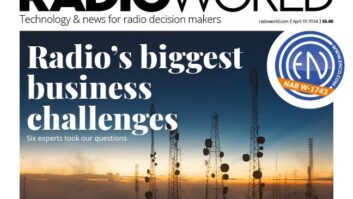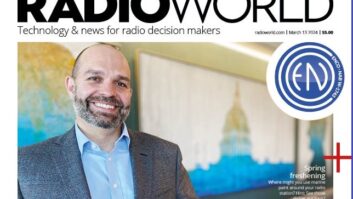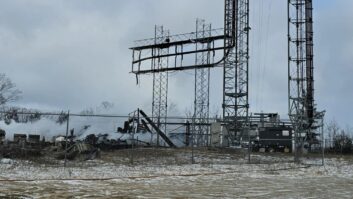Littlejohn Notwithstanding, Not Everyone Wants to Reduce Their AM Bandwidth
The concept that all AMs should reduce bandwidth to cut analog interference on the band is proving controversial.
The debate parallels one in the 1980s, when the National Radio Systems Committee considered how low it could go with bandwidth to reduce interference on the AM band from such devices as fluorescent lights.
At that time the compromise was 10 kHz, according to Milford Smith, DAB Subcommittee co-chairman of the NRSC and vice president of engineering for Greater Media.
“There was tremendous controversy about that; and there were respected and well-qualified engineers who were totally against doing that,” said Smith. “It turns out that 10 kHz was a compromise between the 15 kHz we had and the 5 kHz that some people were suggesting would be appropriate. The 10 kHz happened.”
The new proposal by Clear Channel Radio that AMs follow its lead and reduce bandwidth to 5 kHz for non-music-intensive stations and 6 kHz for music stations became public when Radio World Online reported it on Sept. 30.
It is receiving much attention from broadcasters. Some radio groups have embraced the concept, including Crawford Broadcasting, which implemented the policy on its AMs shortly after Clear Channel.
Other engineers have told Radio World the idea isn’t new and that individual AMs have been implementing the idea for years.
Better or worse
Some critics worry about the effect on wideband receivers and believe implementation actually would degrade the analog AM band further.
Clear Channel Radio’s Senior Vice President of Engineering Jeff Littlejohn, who made the decision at his company, also is co-chairman of the NRSC Subcommittee on AM. He brought up the bandwidth reduction issue to fellow members of the committee during its meeting at the NAB Radio Show in October. He believes the plan would reduce interference on the analog AM band if all AMs reduce bandwidth.
After two years of study, Littlejohn says, he concluded it serves no purpose for AMs to continue broadcasting 10 kHz audio when the typical receiver has audio response of less than 4.5 kHz. He said the benefit to the change would be two-fold: increased modulation efficiency and reduced interference to first-adjacent frequencies.
NAB has not taken a position on the issue, preferring to poll its members, according to John Marino, vice president of NAB Science and Technology.
Littlejohn didn’t expect the NRSC to make a decision on the issue at the October meeting, and it didn’t.
Smith said the committee has several options, including conducting tests, issuing its own recommendation or doing nothing. He said no decision has been made.
Several sources complained to Radio World about the proposal, particularly its impact on AMs that don’t intend to go digital. In their view, the idea boils down to degrading analog to make digital sound better in comparison, to drive consumers to buy HD Radios. These engineers say reducing AM bandwidth to limit interference doesn’t negate the interference produced on the IBOC sidebands to first-adjacent stations, especially at night.
Although the proper implementation of IBOC will require AMs to reduce audio bandwidth to 5 kHz, Littlejohn said Clear Channel’s AM bandwidth reduction decision was unrelated to the group’s digital conversion stance.
“I want to be clear about the distinction,” he told Radio World. “If we decrease interference it will help out the AM band. Whether it’s analog or digital doesn’t matter. It will help all AM radio simply because there’s reduced interference.”
‘Extreme’ idea
Mark Heller, owner of 1,000-watt daytimer WTRW(AM) in Two Rivers, Wis., part of the Green Bay market, called the proposal “extreme,” one that would make analog AM sound like shortwave.
“As an industry, we’ve promoted building better-quality AM radios. … We’re going to have another opportunity to miss improving our AM receivers,” he said. “There is now no incentive for any AM radio receiver manufacturer to build anything except 6 kHz or lower-grade receivers for analog. ‘So long, broad bandwidth.’ …
“What incentive is there for transmitter manufacturers to build quality analog audio sections to their units now?”
He said his station has bandwidth of about 8 kHz and cited the GE SuperRadio and a model from C.C. Crane as wideband radios available on the market.
A source at a receiver manufacturing firm said, “AM receivers that do implement broad bandwidth are not as common as people may think.” He said some manufacturers are assuming HD Radio eventually will become the broadcast standard, meaning AMs will all reduce bandwidth to 5 kHz at some point.
A broadcast engineer for a large group noted that there are OEM radios used by automakers that are wider than 3 or 4 kHz bandwidth, but said these are a fraction of the market. “They get so much interference, they’re ‘P.O.S.’ at night,” he said.
Bob Gonsett of the CGC Communicator engineering newsletter takes a different view.
“Some people do have wideband receivers. If there were no wideband receivers, this wouldn’t be an issue,” he said. Gonsett and several other sources said the proposal should not be mandated for all stations, that individual outlets should have the option to reduce bandwidth voluntarily.
He believes the marketplace will decide the outcome of this issue.
Old battle
IBOC proponents say reducing AM bandwidth makes sense.
“It reduces interference,” the top engineer of a large radio group said. “As a practical matter, most of the receivers out there aren’t going to pick up the higher fidelity of the wider-bandwidth signals anyway. That battle was lost 20 years ago.”
Some sources have told Radio World they believe the proposal is a way of “junking up” the AM analog band to stimulate the sale of IBOC radios artificially. But the group engineer quoted above finds this a stretch.
“If Clear Channel wants to do something to promote IBOC, all they have to do is convert all of their stations,” he said. “That would do far more to stimulate IBOC sales in the marketplace than simply proposing a reduction of bandwidth so that AM would sound worse.”
Tell Radio World what you think about this issue. Send e-mail to [email protected] or write to Reader’s Forum, P.O. Box 1214, Falls Church, VA 22041.












